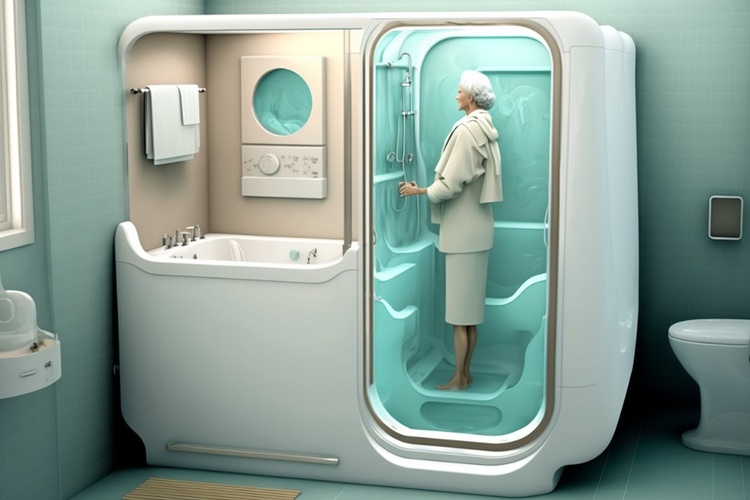The Evolution and Benefits of Walk-in Showers: Modern Solutions for Safety and Comfort
Walk-in showers have revolutionized bathroom design by combining accessibility, style, and functionality. Unlike traditional shower-tub combinations, these barrier-free installations offer easy entry without the need to step over high tub walls. As bathroom design trends continue to evolve, walk-in showers have become increasingly popular not only among senior citizens but also homeowners seeking a contemporary, spacious bathroom aesthetic. These installations provide practical benefits while enhancing the overall value and appeal of residential bathrooms.

Enhanced Safety and Comfort Features
Safety remains one of the most compelling reasons homeowners choose walk-in showers. Traditional bathtubs present significant fall risks, particularly for individuals with mobility challenges. Walk-in showers eliminate the dangerous high threshold that causes many bathroom accidents. Modern designs incorporate numerous safety elements, including non-slip flooring with textured surfaces that provide secure footing even when wet. Grab bars installed at strategic locations offer additional stability during entry, exit, and while showering. Many walk-in shower designs also feature built-in seating, allowing users to rest during their shower experience, further reducing fatigue and fall risk for those with limited stamina or balance issues.
The Evolution of Walk-in Showers
The concept of barrier-free showering spaces has transformed dramatically over the decades. Early walk-in designs were primarily functional, often resembling institutional installations found in hospitals or care facilities. They prioritized accessibility but lacked aesthetic appeal. Today’s walk-in showers represent a remarkable evolution in both form and function. Contemporary designs seamlessly blend into luxurious bathroom environments with sleek glass enclosures, sophisticated drainage solutions, and premium materials like natural stone, porcelain, and designer tiles. The modern walk-in shower has become a design statement while maintaining its practical advantages, proving that accessibility can coexist with high-end aesthetics.
Key Features for Seniors and Mobility-Challenged Individuals
For older adults and those with mobility limitations, specific walk-in shower features provide critical benefits. Zero-threshold entries create seamless floor transitions, allowing wheelchairs to roll directly into the shower space without obstruction. Thermostatic mixing valves prevent dangerous temperature fluctuations that could cause scalding, a particular concern for those with decreased sensitivity. Adjustable-height handheld shower wands offer flexibility for seated showering, allowing water to be directed precisely where needed. Additionally, many models incorporate wider doorways to accommodate walkers or wheelchair access. These specialized features transform the bathing experience from potentially hazardous to safe and independent.
Smart Technology Integration in Modern Walk-in Showers
The bathroom has not escaped the smart home revolution, and walk-in showers now incorporate impressive technological innovations. Digital temperature controls allow users to set and maintain precise water temperatures with the touch of a button. Programmable shower systems can store individual preferences for multiple household members, automatically adjusting water pressure and temperature to each person’s specifications. Voice-activated controls enable hands-free operation, particularly beneficial for those with dexterity challenges. Some advanced models even include chromotherapy lighting, aromatherapy dispensers, and built-in Bluetooth speakers, transforming the shower into a multisensory wellness experience.
Hygienic Innovations in Walk-in Shower Design
Modern walk-in showers incorporate materials and design elements that significantly enhance cleanliness and maintenance. Antimicrobial surfaces resist bacteria and mold growth, a crucial feature in the warm, humid shower environment. Curbless designs eliminate difficult-to-clean corners where mold typically accumulates in traditional shower enclosures. Many contemporary models feature quick-drying materials that resist water absorption, further inhibiting microbial growth. Improved ventilation systems reduce humidity levels, while specially designed drainage solutions prevent water pooling. These innovations not only create a more sanitary bathing environment but also reduce the cleaning time and effort required to maintain the shower space.
Cost Considerations and Installation Options
Walk-in shower installations vary significantly in price depending on design complexity, materials, and whether it’s a retrofit or part of new construction. Basic prefabricated walk-in shower units start at approximately £1,500, while custom tile installations with premium features can exceed £10,000. Converting an existing bathtub to a walk-in shower typically costs between £3,000 and £5,000, including necessary plumbing modifications and waterproofing.
| Type of Walk-in Shower | Average Cost Range (GBP) | Installation Timeline | Key Features |
|---|---|---|---|
| Prefabricated Units | £1,500 - £3,000 | 1-2 days | Easy installation, limited customization |
| Semi-Custom | £3,000 - £6,000 | 3-5 days | Some design flexibility, mid-range materials |
| Custom Tile Installation | £6,000 - £10,000+ | 7-14 days | Fully customizable, premium materials |
| Tub-to-Shower Conversion | £3,000 - £5,000 | 3-7 days | Utilizes existing space, requires waterproofing |
| ADA-Compliant Installation | £4,000 - £8,000 | 5-10 days | Zero-threshold, wider entry, grab bars included |
Prices, rates, or cost estimates mentioned in this article are based on the latest available information but may change over time. Independent research is advised before making financial decisions.
The investment in a walk-in shower often qualifies for various financial assistance programs, particularly for seniors or individuals with disabilities. Many local authorities offer home adaptation grants, while certain medical conditions may qualify homeowners for VAT exemptions on accessibility modifications. When considering installation, it’s advisable to consult multiple contractors with experience in accessible bathroom design to ensure compliance with relevant building regulations.
Conclusion
Walk-in showers represent a significant advancement in bathroom design, successfully balancing safety, accessibility, and aesthetic appeal. As the population ages and universal design principles gain prominence, these installations continue to evolve with improved features, technological integration, and hygienic innovations. Whether installed for current accessibility needs or as a forward-thinking home improvement, walk-in showers offer tangible benefits that enhance both the functionality and value of residential bathrooms. Their growing popularity reflects a broader design philosophy that recognizes accessibility not as a compromise but as an integral component of thoughtful, modern home design.




